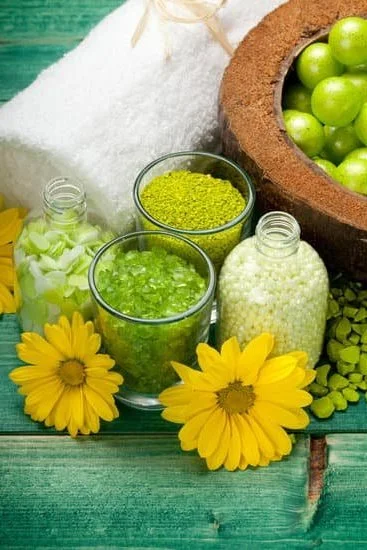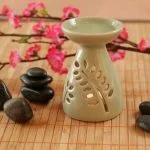Aromatherapy has gained popularity in recent years as a holistic healing practice that uses essential oils to promote physical and emotional well-being. In this article, we will delve into the world of aromatherapy, exploring its benefits, techniques, and cost. If you’re wondering “how much is an aromatherapy session?” then you’ve come to the right place.
Aromatherapy is the use of plant extracts, known as essential oils, to improve one’s overall health and wellness. These essential oils can be inhaled or applied to the skin through massage or other methods. The practice is believed to have a range of benefits from reducing stress and anxiety to relieving pain and improving sleep quality.
During an aromatherapy session, clients can expect a calming and relaxing environment where they will be exposed to various scents through inhalation or topical application. Different techniques such as diffusing oils in a room or using them in a massage are common practices during these sessions. It is important for individuals considering aromatherapy to understand the different types of techniques used and what to expect during their sessions.
What to Expect During an Aromatherapy Session
During an aromatherapy session, clients can expect a relaxing and soothing experience that aims to improve their overall well-being. The process typically begins with a consultation where the aromatherapist will discuss the client’s individual needs, preferences, and any specific health concerns. This allows the therapist to tailor the session to meet the client’s unique requirements.
Aromatherapy Techniques
Once the consultation is complete, the actual aromatherapy session begins. A variety of techniques may be used during the session, including diffusing essential oils, topical application of essential oils, and inhalation therapy. Diffusing essential oils involves using a diffuser to disperse the aroma of essential oils throughout the room, creating a pleasant and calming atmosphere.
Topical application may include massages or applying diluted essential oils directly to the skin in specific areas for targeted relief. Inhalation therapy can involve breathing in the scent of essential oils through steam inhalation or by using a personal inhaler. Each technique offers its own set of benefits and contributes to the overall therapeutic experience.
Benefits of Aromatherapy
Clients can expect to experience a range of benefits during an aromatherapy session, depending on their specific needs and chosen techniques. Aromatherapy has been known to promote relaxation, reduce stress and anxiety, alleviate muscle tension, improve sleep quality, and even provide relief from certain physical ailments. Furthermore, each essential oil carries its own unique properties and benefits – for example, lavender is often used for its calming effects while peppermint is known for its energizing properties.
Ultimately, clients can expect a rejuvenating experience that not only targets physical symptoms but also addresses emotional well-being. The goal of an aromatherapy session is to create a holistic sense of balance and relaxation that leaves clients feeling refreshed and revitalized after their session.
As clients consider what to expect during an aromatherapy session and how much it might cost them, it’s important for them to weigh these factors against the potential benefits they stand to gain from such sessions as mentioned above.
Different Types of Aromatherapy Techniques
Aromatherapy utilizes various techniques to deliver the therapeutic benefits of essential oils to individuals seeking relaxation and overall wellness. Different methods and techniques can be employed during an aromatherapy session, each offering unique advantages and catering to specific needs. Here are some common types of aromatherapy techniques used in sessions:
- Inhalation: This method involves breathing in the aromatic molecules released by essential oils. It can be done through direct inhalation from the bottle, using a diffuser, or adding a few drops to a bowl of hot water.
- Topical Application: Essential oils can be diluted in carrier oils and applied directly to the skin through massage or as part of a body treatment. This allows for absorption through the skin and provides localized benefits.
- Aerial Diffusion: Aromatherapy diffusers disperse essential oil molecules into the air, allowing them to be inhaled and absorbed by the body. This method is often used in spa settings or at home for creating a soothing atmosphere.
- Bath Therapy: Adding a few drops of essential oils to bathwater can create a luxurious and therapeutic experience. The warm water helps to release the aroma, while the oils can be absorbed through both inhalation and skin contact.
Understanding these different techniques will help individuals choose an aromatherapy session that aligns with their preferences and wellness goals. Each method offers its own set of benefits, so it’s important for clients to communicate their needs with their aromatherapist to ensure a personalized and effective experience.
While these are some of the most common techniques used in aromatherapy sessions, practitioners may also employ specialized methods based on individual preferences or specific health concerns. Therefore, individuals interested in experiencing aromatherapy should inquire about the specific techniques offered by different providers when considering how much an aromatherapy session might cost. Ultimately, choosing a technique that resonates with one’s needs can enhance the overall satisfaction derived from an aromatherapy session.
Factors Affecting the Cost of an Aromatherapy Session
When it comes to determining the cost of an aromatherapy session, there are several factors that can influence the pricing. Understanding these factors can help you better comprehend why prices may vary from one provider to another.
Quality of Essential Oils
One of the key factors that affect the cost of an aromatherapy session is the quality of essential oils used during the treatment. High-quality, pure essential oils, which are sourced from reputable suppliers and are free from synthetic additives, tend to be more expensive. Providers who use top-grade essential oils in their aromatherapy sessions may charge higher prices to cover the cost of these premium products.
Experience and Training of Practitioners
The expertise and experience of the aromatherapist or practitioner conducting the session can also impact its cost. Highly skilled professionals with advanced training and certifications in aromatherapy may command higher fees for their services compared to those who are less experienced or have minimal training. Clients may be willing to pay a premium for practitioners with a proven track record and specialized knowledge in the field.
Length and Complexity of Session
The duration and complexity of an aromatherapy session can also play a role in determining its cost. Longer sessions or those that involve more advanced techniques such as personalized blends or additional complementary therapies may be priced higher than standard sessions. Some providers may offer tiered pricing based on the length and intricacy of the session, allowing clients to choose a level that aligns with their budget and needs.
Considering these factors can give you insight into how much an aromatherapy session might cost at different providers, helping you make an informed decision when seeking out this therapeutic treatment.
Average Cost of an Aromatherapy Session
Aromatherapy sessions generally vary in cost depending on various factors such as the location, the experience of the practitioner, and the specific services offered. On average, a typical aromatherapy session can range from $50 to $150 per session. However, it is important to note that specialized or premium services may come with a higher price tag.
Factors that can influence the cost of an aromatherapy session include the use of high-quality essential oils, personalized treatment plans, additional complementary therapies such as massage or reflexology, and the duration of the session. In addition, practitioners with advanced training or specialized certifications may charge higher fees for their expertise.
It is recommended for individuals interested in aromatherapy to inquire about the specific services included in a session and to ask about any potential additional costs before booking an appointment. Some practitioners may offer package deals or discounted rates for multiple sessions, which can help make aromatherapy more affordable for those seeking regular treatment.
| Location | Cost Range |
|---|---|
| Urban Area | $80 – $150 |
| Rural Area | $50 – $100 |
| Premium Services | $150 – $300 |
Specialized Aromatherapy Services
In addition to traditional aromatherapy sessions, there are specialized and premium services available for those seeking a more tailored experience. One such specialized service is personalized aromatherapy, where essential oils are specifically chosen based on individual needs and preferences. This may involve a thorough consultation with a certified aromatherapist to identify the most suitable essential oils for the client.
Another specialized aromatherapy option is the use of rare or exotic essential oils. These oils are often more expensive due to their scarcity and unique properties. Clients looking for a truly indulgent experience may opt for these premium essential oils during their aromatherapy session.
For individuals seeking a holistic approach to wellness, some spas and wellness centers offer combination treatments that incorporate aromatherapy with other practices such as massage therapy, acupuncture, or yoga. These integrated services aim to provide comprehensive health benefits by addressing the physical, mental, and emotional aspects of well-being.
It’s important to note that the costs of these specialized aromatherapy services will vary depending on the provider, location, and specific offerings. Clients interested in these premium options should inquire about pricing during their initial consultation or when booking their appointment.
| Specialized Service | Associated Cost |
|---|---|
| Personalized Aromatherapy | Varies; typically higher than standard session |
| Rare/Exotic Essential Oils | Can range from $50-$200 per session |
| Integrated Wellness Treatments | Pricing depends on specific package and duration |
Tips for Choosing an Affordable Aromatherapy Session
When looking for an affordable aromatherapy session, there are several factors to consider in order to find cost-effective options. Here are some tips for choosing the right aromatherapy session that fits your budget:
- Research Different Providers: Take the time to explore different aromatherapists or wellness centers in your area to compare prices and services offered. Look for special promotions or discounts that may be available.
- Consider Group Sessions: Some aromatherapists offer group sessions at a lower cost per person. This can be a more budget-friendly option if you’re interested in trying aromatherapy with friends or family members.
- Ask About Package Deals: Inquire about package deals or bundled services, as some providers may offer discounted rates when multiple sessions are purchased upfront.
It’s essential to understand that while price is an important factor, the quality of the aromatherapy session should not be compromised solely based on cost. Make sure to research the credentials and experience of the provider before making a decision.
Ultimately, finding an affordable aromatherapy session involves balancing cost with the quality of service and expertise provided by the professional. By keeping these tips in mind, you can select an option that meets your needs and budget while still enjoying the benefits of aromatherapy.
Conclusion
In conclusion, aromatherapy can offer numerous benefits for both physical and mental well-being, and the cost of a session should not deter individuals from exploring this holistic practice. The process of an aromatherapy session involves the use of essential oils and various techniques to promote relaxation, reduce stress, and alleviate symptoms of certain ailments.
While the cost of an aromatherapy session can vary depending on several factors such as location, expertise of the practitioner, and type of specialized services offered, it is possible to find affordable options without compromising on quality.
When considering the average cost of an aromatherapy session, it is important to factor in any additional specialized services that may be available. Premium services such as customized blends or extended sessions may come at a higher price, but could provide a more tailored experience for individuals seeking specific therapeutic benefits. However, for those seeking more budget-friendly options, it is advisable to explore practitioners or wellness centers that offer package deals or discounts for multiple sessions.
In summary, the cost of an aromatherapy session should not overshadow the potential benefits it can provide. By understanding the different types of techniques used in aromatherapy sessions and considering factors that affect pricing, individuals can make informed decisions when choosing an affordable option. Ultimately, exploring the benefits of aromatherapy at a reasonable price can lead to improved physical and mental health for those seeking natural and holistic wellness solutions.
Frequently Asked Questions
How Long Does an Aromatherapy Session Last?
An aromatherapy session typically lasts around 60 to 90 minutes, allowing time for the client to relax and fully experience the benefits of the essential oils being used.
How Long Is an Aromatherapy Course?
The length of an aromatherapy course can vary depending on the program and level of certification. Generally, a basic course can last anywhere from a few days to a few weeks, while more comprehensive programs may span several months.
What Happens in an Aromatherapy Session?
During an aromatherapy session, a trained practitioner will assess the client’s needs and preferences before creating a customized blend of essential oils. The client will then inhale the aroma or have it applied topically, experiencing potential benefits such as relaxation, stress reduction, or improved mood.
The practitioner may also provide information on self-care techniques and essential oil usage for home use.

Are you looking for a natural way to improve your health and wellbeing?
If so, aromatherapy may be the answer for you.



